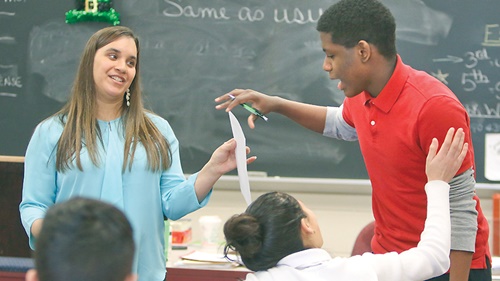
The United States probably has millions of students who are learning English a second language. These students are scattered around and live in all parts of the United States. They speak many different languages. In fact, many big cities may have a diverse group of students who collectively speak more than 50 languages in any given academic year. It is impossible for school districts to provide instruction in that many native languages. Further, it is important to the education of those students that they learn to speak English. Therefore, school districts with English language learners need to be able to appropriately identify and asses students who do not speak English and to provide them with the necessary instruction.
Assessment
A student who seems to be struggling in class and does not seem to be able to understand or participate may be struggling because he or she does not speak English or it may be because the student has a disability. In order to provide effective services for the student, it is important for the school district to understand exactly what the student needs. Therefore, the district must be able to provide appropriate assessments to determine English language proficiency.
Some common tests for English proficiency include the Test of English as a Foreign Language (TOEFL). TOEFEL is, specifically, for college age students and Test of English for International Communications (TOEIC) for adult employees. Similar tests exist for school age students. They vary from state to state and district to district. Such tests may include the Test of Spoken English (TSE) and the Test of Written English (TWE).
Sheltered English Immersion
Sheltered English describes instructional practices that teachers can use to make information more accessible to English Language Learners. Many educational establishment that use the Sheltered English model for English Language Learners use the Sheltered Instruction Observation Protocol (SIOP). SIOP is a research based and classroom tested model. It has proven results for children who speak English as a second language.
SIOP has a 30 point lesson planning checklist that teachers of any grade level and any subject can use to plan their lessons in such a way that they are accessible to English language learners. The emphasis on key vocabulary and relating the lesson to a student’s personal experiences can be valuable not only for English language learners but for all students.
Two Way Immersion Programs
Some districts set up their programs for limited English proficient students in a way in which all students benefit. These districts offer two way immersion programs where students remain on grade level in all content areas while learning English and another language in which many of the students in the class are already fluent. For example, a third grade class using this model might have 10 kids who speak English as their native language and 12 kids who speak Spanish as their native language. Third grade instruction is provided to both groups in English and Spanish.
English as a Second Language (ESL)
Another method of teaching limited English proficient (LEP) students is through the English as a Second Language (ESL) model. This can be used in conjunction with another classroom model such as Sheltered English. The ESL model usually relies on an ESL teacher to provide instruction to ESL students. They may be done in the general education or as a pull out service and often, it is a combination of the two settings.
Transitional Bilingual Education (TBE)
Transitional Bilingual Education has three goals. These goals include grade level academic instruction, English language learning and learning in the native language. TBE is typically offered in larger school districts that have many kids who are limited English proficient and speak the same native language.
It could be hard for school districts to provide appropriate instruction for English learners. These students present challenges. They need to learn English which is a complicated language. In addition, they need to remain on grade level in all academic areas. Some of these students have absolutely no previous formal education or interrupted educational experiences. This makes the task of educating them even more complex. However, each school district has the ethical and legal responsibility to educate students who are learning English as a second language and to do so effectively and efficiently.
Also see Teachers’ Salaries Around the World


